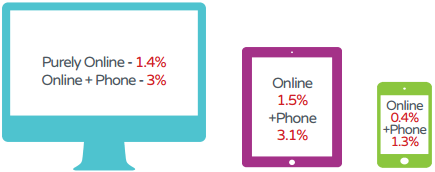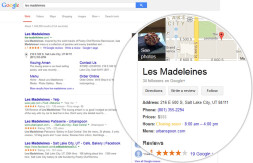Is The Humble Phone Call Still Relevant to eCommerce in 2014?

If I were to tell you that eCommerce is the future of retail, you might think I had been living under a rock since 2001. Yes, eCommerce is the future, but the future is now, and those businesses who aren’t willing to make eCommerce as important to them as it is to their customers are risking being left in the dust. With an estimated $262 billion spent online this year alone, if your business isn’t already a part of the eCommerce revolution, there has never been a better time to start than now.
For those of us with our rears comfortably and sensibly seated on the eCommerce bandwagon, this month marks the end of a record breaking year of eCommerce sales. With a record breaking $1.74 billion spent online this Cyber Monday, and PayPal alone handling a mind boggling $5580 every second during the third quarter of this year, online retailers definitely have something to celebrate. But when the office parties are over and all that remains of Christmas is a pile of washing up left in the kitchen sink, perhaps we will all find a moment to think about how we can improve our digital businesses in 2014. Here we take a look at one change you can make to the way your online retail activities operate which is guaranteed to have a positive impact on customer experience, maybe even your bottom line, and it all revolves around ol’ faithful, the telephone.
A new report published by call tracking provider ResponseTap, who surveyed 2000 consumers and interviewed 250 online marketing managers, suggests that online consumers don’t just appreciate a seamless telephone support system in your eCommerce store, they expect it. Unfortunately, this isn’t as easy as having a number set up and checking the answer phone messages on it as often as possible. 64% of consumers surveyed stated that they get frustrated when the business they are trying to purchase from doesn’t offer any kind of telephone support, nearly three quarters of which (71%) expected this frustration to be dealt with in under five minutes. 48% felt that they would abandon their shopping cart and never return if this five minute deadline wasn’t met.
This might seem to be in conflict with one of the core concepts of eCommerce: a customer should be able to navigate through the ordering process with as little assistance or human interaction as possible. After all, why would we buy online if we wanted to deal with actual human beings? Typical customers want the checkout process to be as quick, clean and hassle free as possible. This means presenting the customer with as much information as they need (but not more) as and when they need it, all the way through the checkout.
However, when it comes to your most valued customers, the ones who are spending a lot, the rules change slightly. A recent study by Google researched this phenomenon and found that at certain price thresholds (which vary by industry), eCommerce customers would rather pick up the phone and talk with someone inside the business.
As the cost of a basket increases, the number and complexity of questions the consumer has will exponentially increase until they reach a point where the website alone cannot provide the personalized answers they require. As you can see, for products with far reaching purchase consequences (a car you will have for five years or a holiday you only get one of every 12 months) this happens at a lower price relative to the total cost of the item. What is most surprising here is that in conventional retail, the tipping point is only $119. This certainly isn’t a small basket, but it isn’t a particularly large one either. Whether your customer wants reassurance about your product’s features or just wants to check your delivery schedule, to ensure these high value baskets make it all the way through the checkout it is vital that you answer the call.
ResponseTap’s research also found that one in every three shoppers like the idea of having a conversation with someone from the online retailer before making a purchase. This figure sharply rises to 41% in the over 55 demographic, a hangover from the days of catalogue mail order. However, the truly interesting thing about this phenomenon is that it isn’t the physical act of making a phone call that reassures these customers, but rather it is the knowledge that they could ring you if the need to do so arose. 57% of those surveyed stated that a clearly displayed customer support telephone number has the effect of making them trust a site more and makes them more likely to view it as an authority. 56% believed they would be more likely to shop again with a retailer who had these systems in place.
So your customers have made their opinion clear, the telephone remains a highly relevant part of their online shopping journey. Just to drive the point home, here is a visualisation from the ResponseTap study showing how much of a difference encouraging your customers to pick up the phone and talk to you can have on the king of retail metrics, your conversion rate. These numbers look at conversion rates across multiple devices and, surprise surprise, it is mobile devices which are most impacted by the inclusion of telephone support.
Whether your business is just starting its quest to offer telephone support to customers, or you are currently managing a busy call center team who are reassuring and converting your online visitors all day long, there is always room for improvement. To see the full findings of the ResponseTap report or to download the white paper, visit the reasearch micro site at: www.responsetap.com/offthegrid














